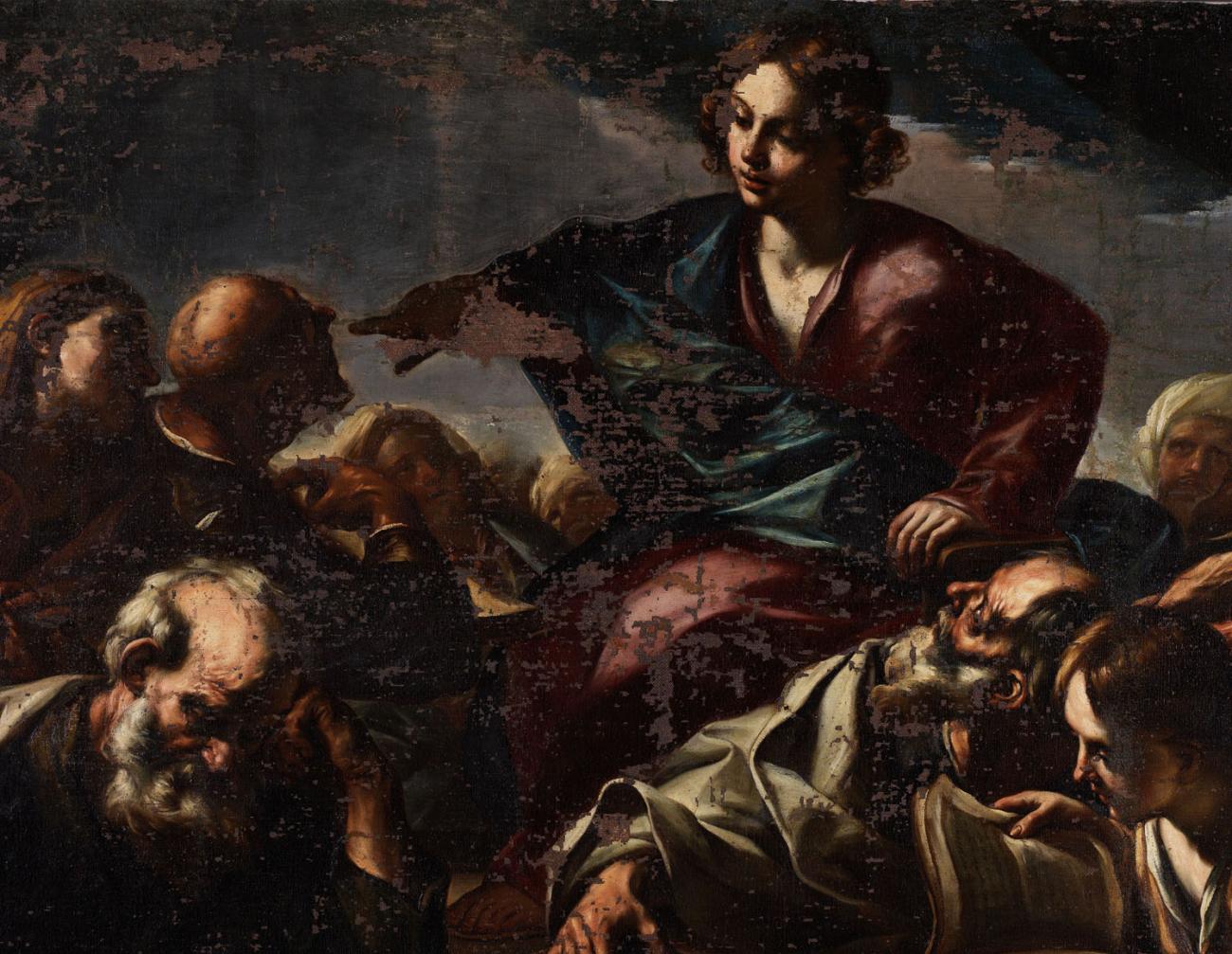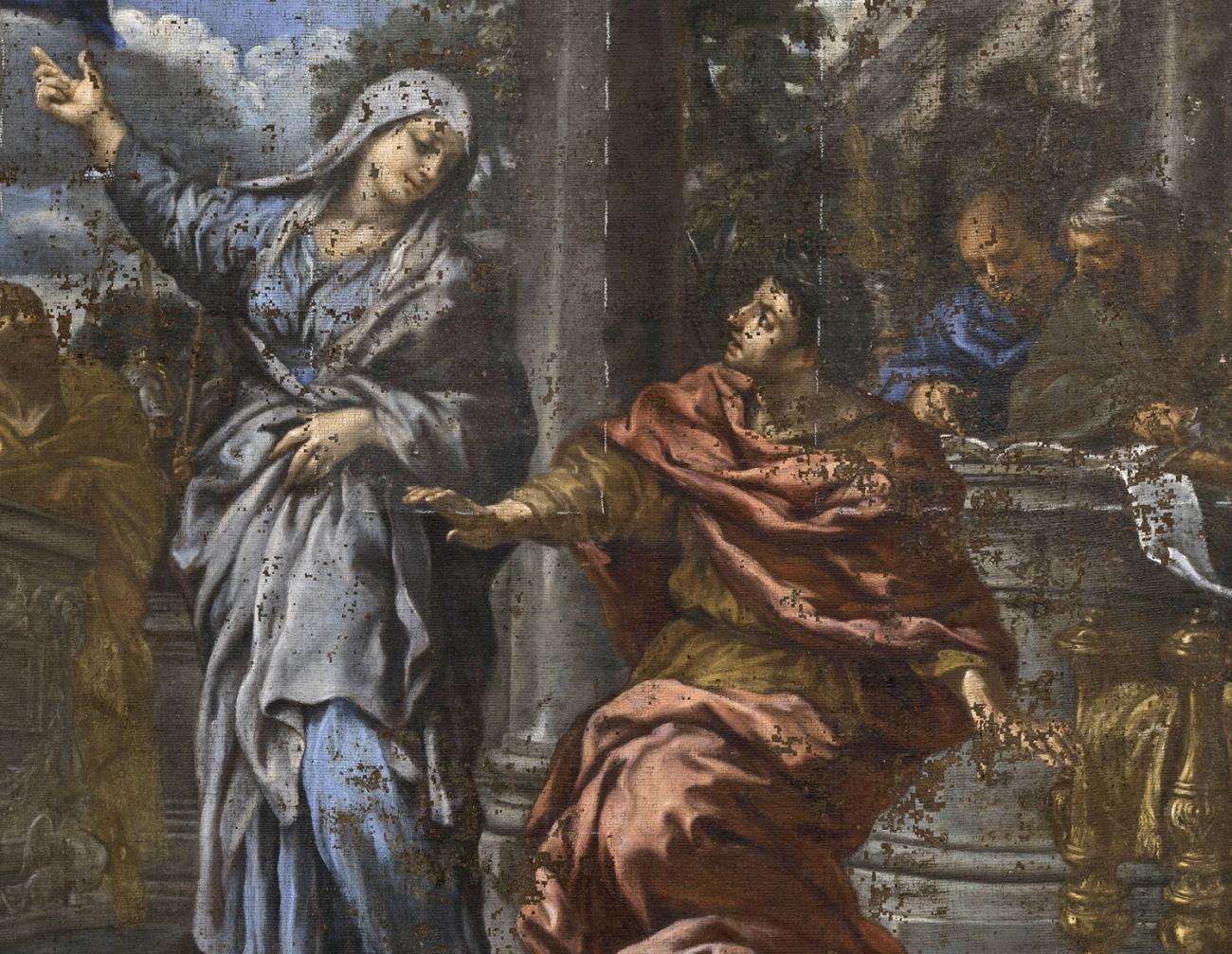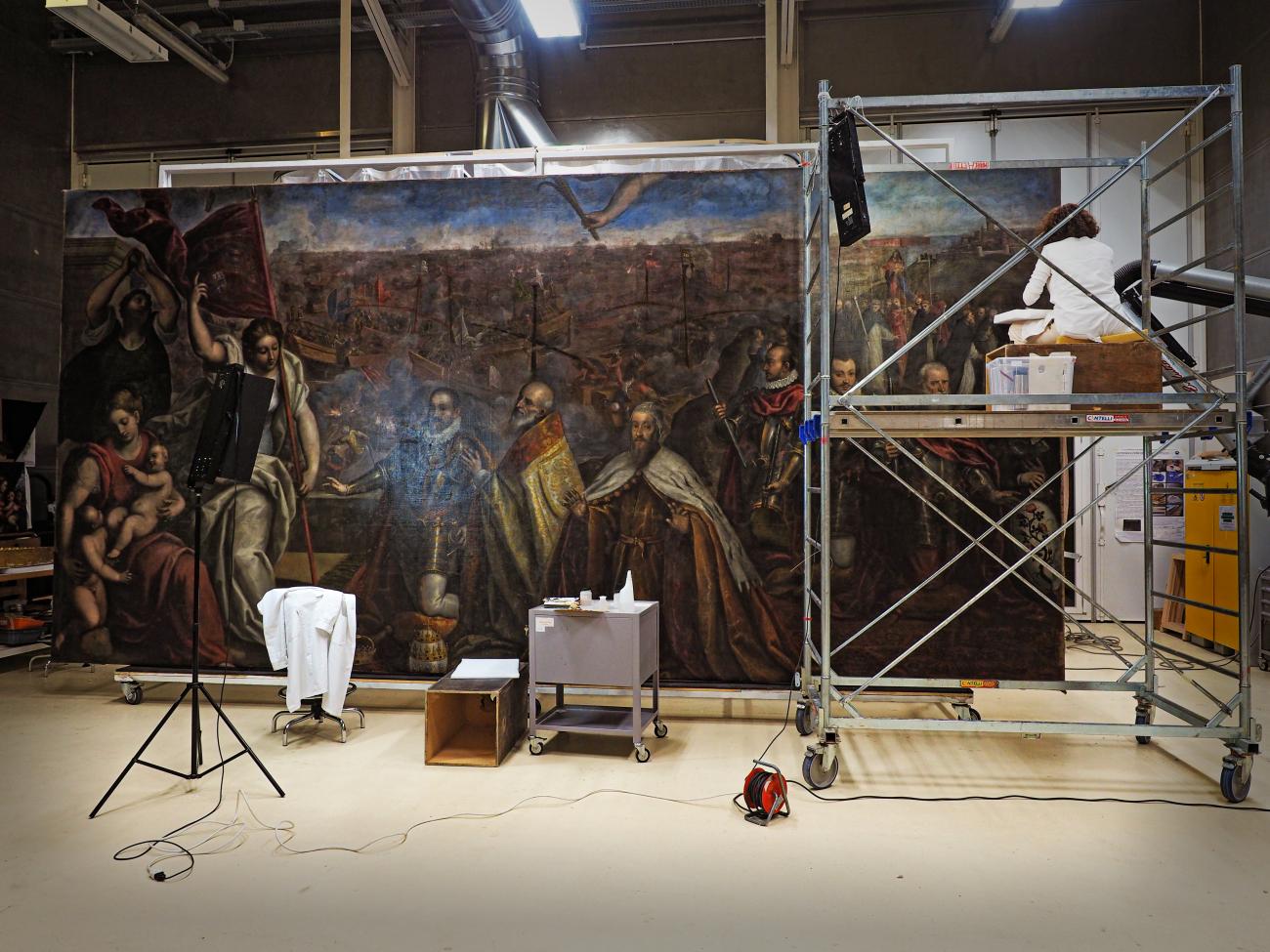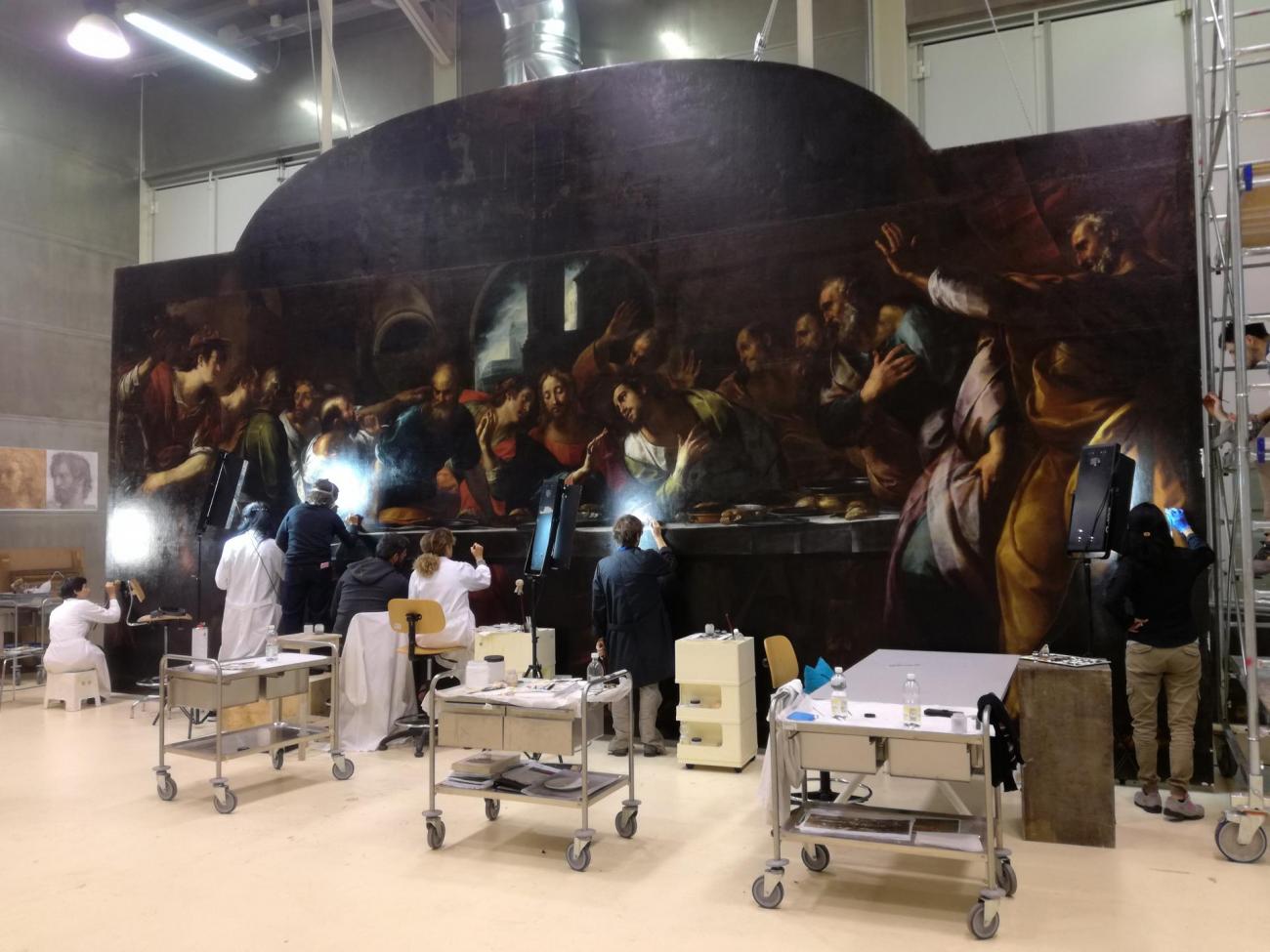This Laboratory specialises in the study and preventive conservation of paintings on canvas, art collections and gallery collections, such as the paintings destined for the Hall of Diana in the Reggia di Venaria and the gallery of the Oratory of Compagnia di San Paolo.
Over the years the Laboratory has gained significant experience in the treatment of 16th and 17th century Venetian painting, through numerous restoration works on paintings by Tintoretto, Veronese, Bassano and Palma the Younger.
In recent years the Laboratory has had the opportunity to consolidate its experience in large canvases, in particular the monumental Last Supper by Giulio Cesare Procaccini, in the Basilica of Santissima Annunziata del Vastato in Genoa, which required an articulate and complex restoration taking almost three years.
Sulla base del confronto con altre opere del pittore, l’attribuzione a Giovanni Battista Beinaschi è stata avanzata da Rossana Vitiello, funzionario storico dell’arte che ha diretto i primi interventi di restauro, e proposta nel 2010 in occasione della mostra Memorie del Sacro nelle collezioni del Castello di Racconigi.
A causa delle sue «condizioni di deperimento», nel 1923 il quadro viene inserito nell’elenco dei beni da scartare conservati al Castello di Moncalieri, dove si trovava sicuramente dall’inizio del secolo; tra gli anni trenta e quaranta del Novecento entra nelle raccolte del Castello di Racconigi. Il restauro condotto dal Centro ha previsto una prima fase di studio e intervento nell'ambito dell'attività didattica del Corso di Laurea; grazie alla collaborazione tra la Direzione regionale Musei Piemonte e il Consorzio delle Residenze Reali Sabaude è stato possibile completare il recupero dell'opera e della sua leggibilità figurativa.
L’opera è una replica fedele della tela di analogo soggetto oggi al Musée des Beaux Arts di Nancy, dipinta da Pietro da Cortona negli anni cinquanta del Seicento su commissione di Louis Phélypeaux de La Vrillière per l’Hôtel de Toulouse a Parigi.
Il dipinto è la più piccola delle tre versioni attualmente note del quadro di Nancy: le altre due sono alla Royal Collection di Hampton Court e al Ringling Museum di Sarasota. Dopo un passaggio documentato nelle collezioni del Castello di Moncalieri, il dipinto arriva al Castello di Racconigi tra gli anni trenta e quaranta del Novecento. Il restauro condotto dal Centro ha previsto una prima fase di studio e intervento nell'ambito dell'attività didattica del Corso di Laurea; grazie alla collaborazione tra la Direzione regionale Musei Piemonte e il Consorzio delle Residenze Reali Sabaude è stato possibile completare il recupero dell'opera e della sua leggibilità figurativa.
The large dimensions (675x335x15 cm) of the work that is part of the art collections of Villa San Remigio (Verbania) led to an appropriate and congenial management of the spaces of the Tele e Tavole Laboratory. The painting on canvas by Jacopo Negretti known as Palma il Giovane (Venice 1544-1628) depicting the Battle of Lepanto, from the second half of the 16th century, has in fact become an interesting challenge both in terms of knowledge and restoration.
The work has come down to us considerably reduced in height and strongly compromised in terms of the pictorial surface. The different phases of the intervention, which are being concluded, concerned not only the cleaning of the entire surface with consequent consolidation, but also a new tensioning, the supply of a more appropriate support structure to which a capillary chromatic integration was added. has returned all the characteristics and multiple varieties, crediting the Venetian painter as a true "master of color".
The large scale of the work, consisting of around 40 square metres of painted surface, and the complexity of its restoration were an extraordinary opportunity for the canvas laboratory: in addition to the Centro’s nine restorers, four former students from the Degree Course were involved. The work had been previously studied, and the restoration itself started with two theses primarily addressing problems related to the support medium and cleaning methods.
The painting had been urgently removed from the counter-façade of the Genoese church because the canvas lining had begun to detach, with the risk of serious damage to the work: it arrived at the Centro in 2014 and left the laboratories in late 2017 for presentation at the exhibition “L’ultimo Caravaggio. Eredi e nuovi Maestri” at the Gallerie d’Italia in Milan.



